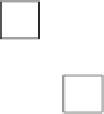Geoscience Reference
In-Depth Information
100
90
used for
erosion
80
sand
B
70
60
sand
D
sand
A
sand
C
50
sand
E
used for
GABION making
40
30
20
10
0
0.1
1
10
100
Diameter (mm)
Fig. 4 Size distribution of rock and bed material
Table 3 Summary of the results
Type of spillway
Q
(L/s)
y
1
(cm)
y
tw
(cm)
V
1
(m/s)
D
50
(mm) SN
d
s
(mm)
Type (1)
19.91
20
20
0.199
3.0
0.904
1
Simple stepped spillway
19.91
15
15
0.265
3.0
1.205
2
19.91
13.5
11.5
0.295
3.0
1.339
5
19.81
13.5
9.5
0.293
3.0
1.332
17.9
41.35
19.0
24
0.435
3.0
1.975
3.6
41.35
15.0
17
0.551
3.0
2.502
20.0
57.95
16.5
21.75
0.702
3.0
3.188
20.4
20
12.5
11.5
0.320
0.90
2.651
18
41.35
15.0
17.0
0.551
0.90
4.568
21
58.4
16.25
21.5
0.719
0.90
5.955
36
Type (2)
19.13
7
10.5
0.547
3
2.480
5.5
Pooled stepped spillway.
End sill in the middle
of downstream apron
41.35
11.5
17
0.719
3
3.263
27
57.95
16
21
0.724
3
3.287
22.6
19.91
8.5
11.5
0.468
0.9
3.881
25.7
41.35
7.5
17
1.103
0.9
9.136
59.7
57.95
10
21
1.159
0.9
9.603
44.0
Type (3)
19.91
15
11.7
0.265
0.9
2.199
18.2
Pooled stepped spillway
and sill in the end of
downstream apron
41.35
14.5
17
0.570
0.9
4.725
28
58.4
14.0
21.5
0.834
0.9
6.912
34.5
closed to prevent sediment particles to be washed away and enter the scour hole. At
the end of each test, the scour dimensions were recorded using a bed profiler. The
results are shown in Table
3
. Figure
5
shows the longitude profile of scour for three
types of spillways for flow discharge of 20 L/s.

































































